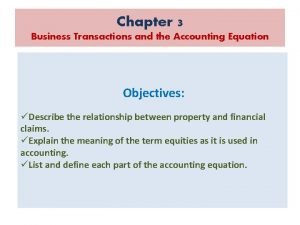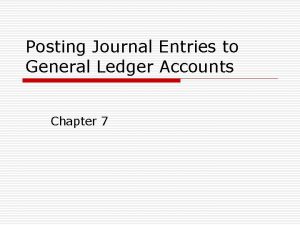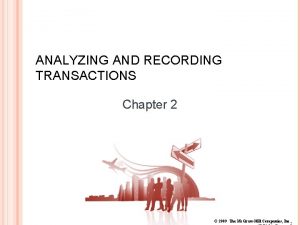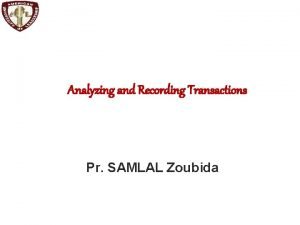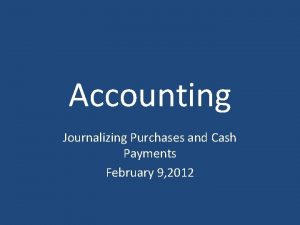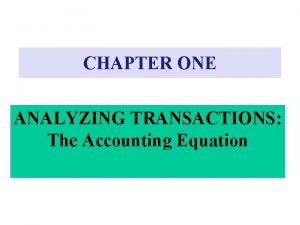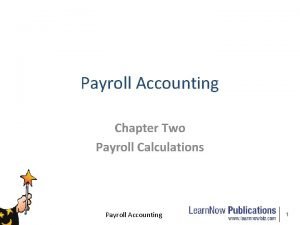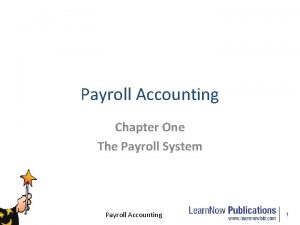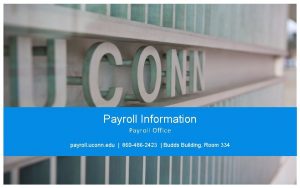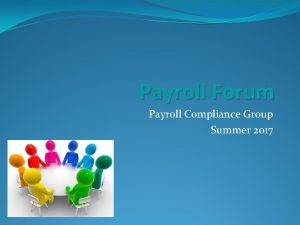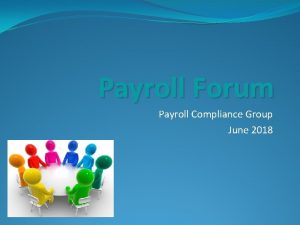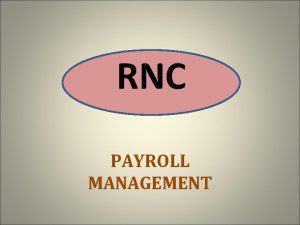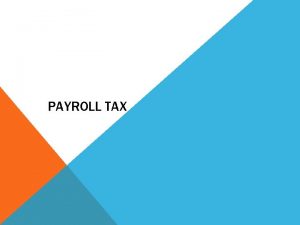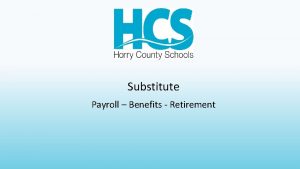CHAPTER 6 ANALYZING AND JOURNALIZING PAYROLL TRANSACTIONS Developed













- Slides: 13

CHAPTER 6 ANALYZING AND JOURNALIZING PAYROLL TRANSACTIONS Developed by Lisa Swallow, CPA CMA MS

ACCOUNTING FOR PAYROLL TRANSACTIONS z. Payroll requires entering data (in order) in the following places: y. Payroll Register y. Employee Earnings Records y. General Journal xjournalize wages xjournalize payroll taxes and workers comp xjournalize period end accruals y. Post to General Ledger

Payroll Register z Payroll register shows (in rows) yeach employee’s gross wages yall taxes withheld and other deductions ynet pay by employee z Payroll register shows (in columns) ytotal of gross wages, each deduction and net z “Foot” or prove payroll register by ensuring that columns and rows all total to bottom right hand number *Use payroll register to journalize*

Employee Earnings Records z. Employee Earnings Record used to track cumulative totals (wages and taxes) z. Enter row of data each pay period yimportant because different wage caps for FUTA, SUTA and OASDI taxes yneed to track cumulative totals in order to issue W-2 s and do quarterly SUTA reports yprepare various internal and external reports

Two Journal Entries to Record Payroll z. Number 1 - Record gross wages, withholdings and net pay z. Number 2 - Record employer payroll tax expense *These two journal entries are always the same in format and you must make both of them every time you issue any paycheck (even if a check for one day’s wages, for example)*

Journal Entry #1 z Debit Wage Expense for gross payroll z Credit each withholding account - they are all liabilities z Credit cash (or wages payable) for net payroll Journal entry Wage Expense FICA Payable FIT Payable SIT Payable Insurance Payable Cash 1845. 00 141. 14 174. 00 50. 00 191. 00 1, 288. 86

Journal Entry #2 z Debit Payroll Tax Expense for total of all payroll taxes that ER pays z Credit each account - they are all liabilities Calculate all employer taxes utilizing varying wage bases and percentages Journal entry Payroll Tax Expense FUTA Payable SIT Payable OASDI Payable HI Payable 188. 92 1. 72 46. 06 114. 39 26. 75

Recording Deposit of Payroll Taxes z Look in general ledger, in each applicable liability account, for amount due z Deposit 941 taxes z Deposit state income tax z Deposit FUTA and SUTA

Workers Compensation z Workers compensation is an expense for the employer, who is required to purchase insurance to protect employees against work related injuries/disabilities ylaws differ by state ypremiums are calculated based on employment classification (clerical people are at different rate than factory workers) per $100 of payroll pay premiums in advance based on forecast ythen at year end report actual wages and pay additional or receive credit towards next year

Recording Workers Compensation y Debit Work Comp Insurance Expense for premium paid y Credit cash (if paying) or insurance payable (if accruing) Journal entry Workers Comp Insurance Expense Cash or Insurance Payable 99. 67

Journalize Period End Accruals z Accrued Wages should be recorded for wages earned by workers but not yet paid (gross) Wage Expense Wages Payable 1589. 96 z Accrued Vacation Pay should be recorded for amount of vacation pay owed employees Vacation Benefits Expense Vacation Benefits Payable 520. 00

Nontax Deductions from Payroll z. Any deduction that the ER makes from EE paycheck goes into a liability account, because they owe it to someone, such as: y. Health insurance premiums y. Purchase EE or HH government bonds y. Union dues y. Deferred compensation (contributions to pension plan)

Garnishments z. A creditor can, through the courts, seek repayment of his/her money by garnishment y. Employer is required to comply with garnishment order y. ER must withhold funds from EE’s paycheck and submit it to appropriate authorities ycannot legally withhold more than 25% of disposable income (after tax earnings)
 Part 2 analyzing the effect of transactions
Part 2 analyzing the effect of transactions Application problem 3-1 accounting answers
Application problem 3-1 accounting answers 400000/12/30
400000/12/30 A form for recording transactions in chronological order
A form for recording transactions in chronological order Post the journal to a ledger of four-column accounts
Post the journal to a ledger of four-column accounts Journalizing transactions
Journalizing transactions Posting reference column
Posting reference column Analyzing transactions
Analyzing transactions Analyzing and recording transactions
Analyzing and recording transactions Analyzing and recording transactions
Analyzing and recording transactions Payroll tax journal entry
Payroll tax journal entry Chapter 9 journalizing purchases and cash payments answers
Chapter 9 journalizing purchases and cash payments answers Analyzing business transactions examples
Analyzing business transactions examples Analyzing transactions
Analyzing transactions

